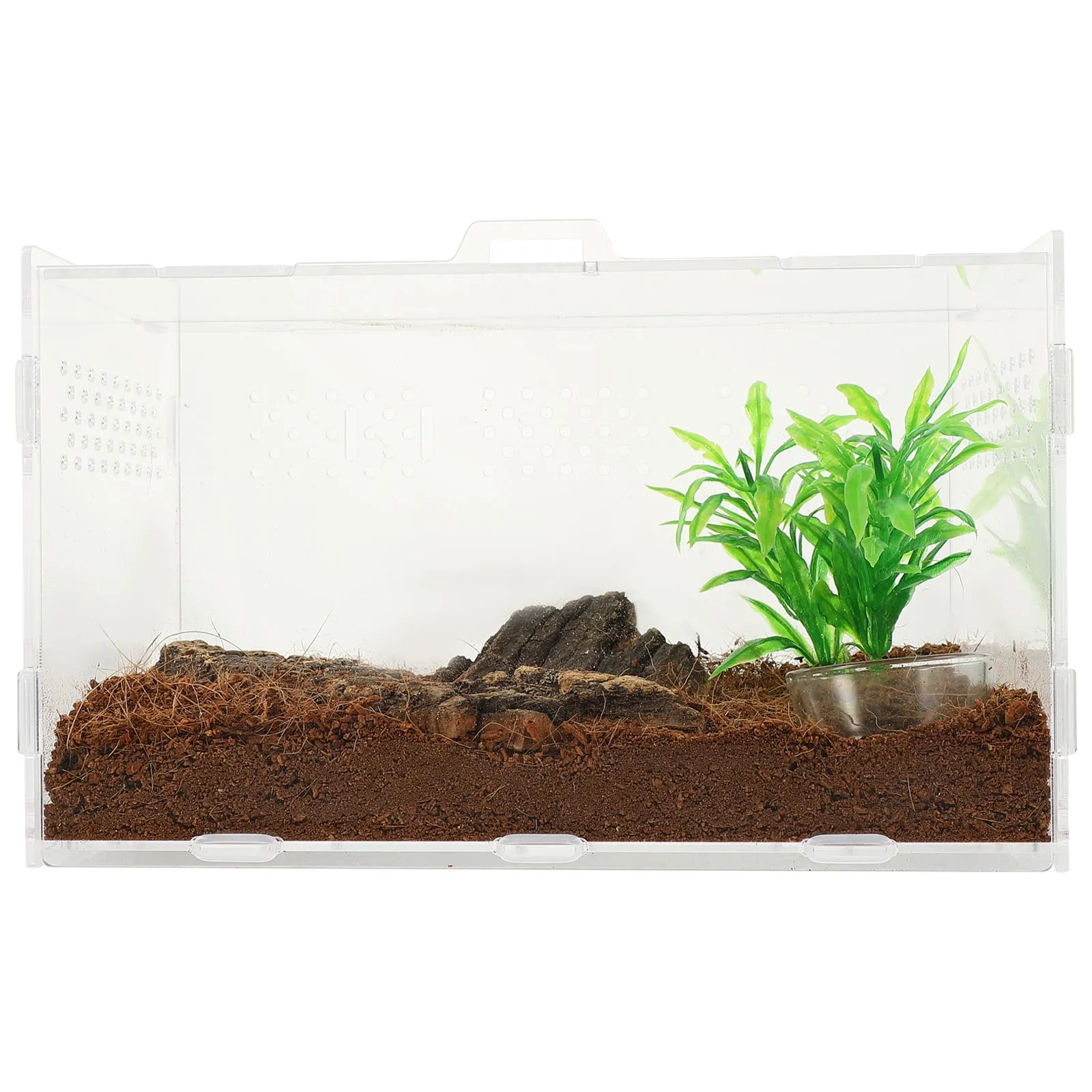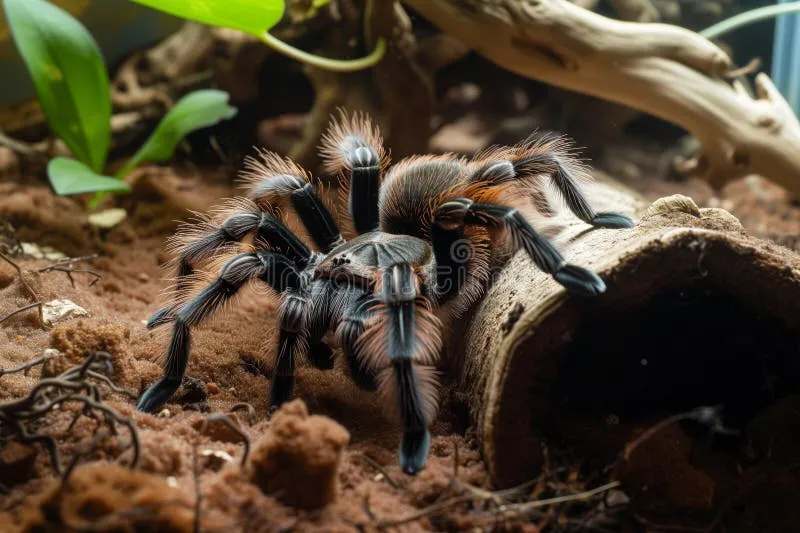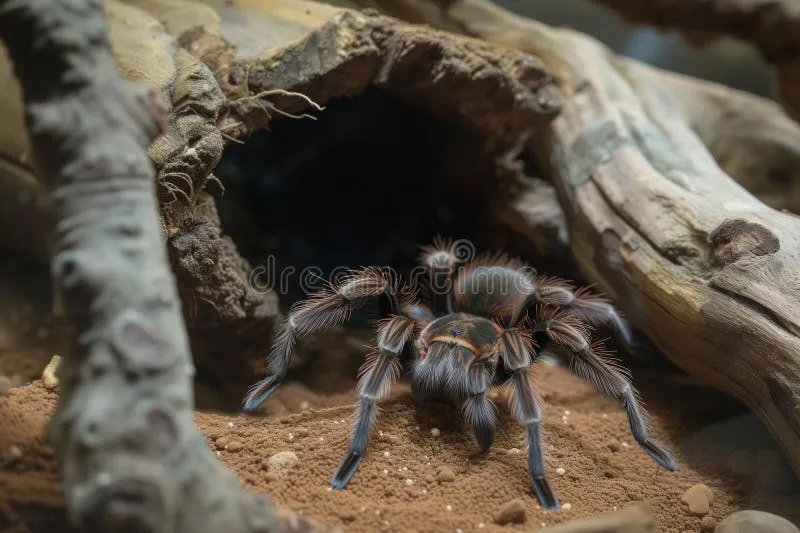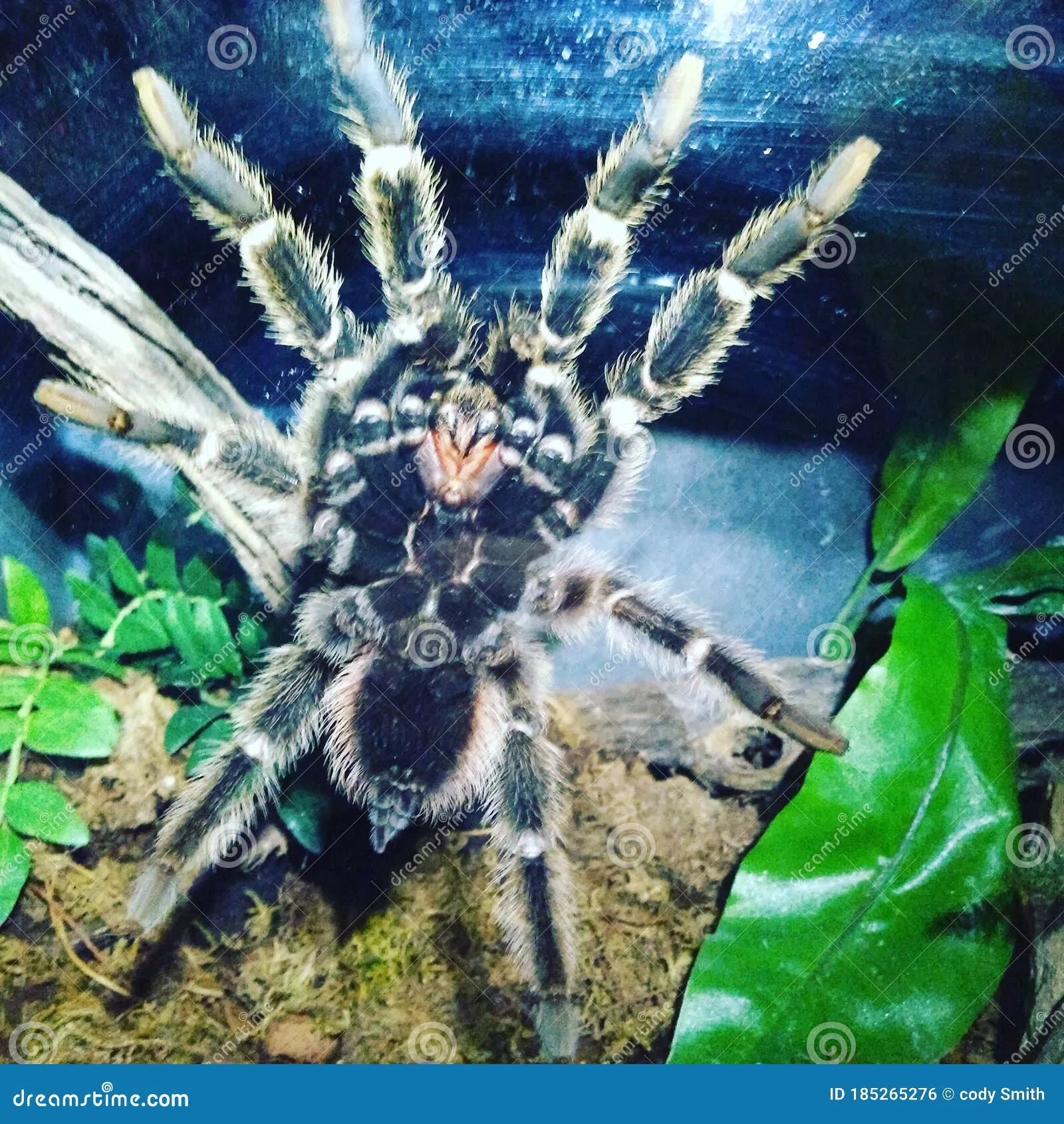Setting up a tarantula glass tank is a rewarding experience that allows you to observe and care for these fascinating creatures. Understanding the fundamental aspects of tarantula tank setup is essential for the well-being of your pet. This comprehensive guide, ‘Tarantula Tank Setup 101 How To Guide,’ will provide you with the necessary knowledge to create a safe, comfortable, and stimulating environment for your tarantula. From choosing the right tank to maintaining optimal conditions, we will cover all the essential steps involved in successful tarantula keeping. Proper setup is crucial for the longevity and health of your tarantula, ensuring a positive and enriching experience for both you and your eight-legged friend. Let’s embark on this journey into the world of tarantula care, starting with the foundation - the tank itself.
Choosing the Right Tarantula Glass Tank
The first step in creating a suitable tarantula habitat is selecting the right glass tank. This choice significantly impacts your tarantula’s well-being and your ability to observe and maintain the environment. Several factors come into play, including tank size, material, ventilation, and lid security. A well-chosen tank provides a secure and comfortable home for your tarantula, allowing it to thrive. Consider the species’ specific requirements and choose a tank that meets those needs. The correct tank will not only provide adequate space but also facilitate proper temperature and humidity control.
Tank Size Considerations
Tank size is paramount. The dimensions of your tarantula glass tank directly affect your pet’s comfort and ability to move around. A tank that’s too small can restrict movement and cause stress, while a tank that’s too large can make it difficult for the tarantula to find food and feel secure. Generally, the tank should be at least twice the tarantula’s leg span in width and length, with enough height to accommodate the substrate and any decorations, and allow ample space for the tarantula to molt without injury. Remember, tarantulas primarily move on the ground; more height is needed for arboreal species that climb. Proper sizing contributes significantly to creating a healthy and stress-free environment.
Tarantula Species and Their Needs

Different tarantula species have different needs when it comes to tank size. Arboreal species, such as the Pinktoe Tarantula, require taller tanks to accommodate their climbing habits, while terrestrial species, like the G. rosea, prefer wider tanks for roaming. Research the specific requirements of your tarantula species. Consider the size the tarantula will reach as an adult. For example, a juvenile tarantula will need an appropriately sized enclosure that won’t overwhelm them. As your tarantula grows, you will need to upgrade the tank size. Understanding your specific species will enable you to provide the most suitable and enriching environment.
Tank Material and Features
The material of your tarantula glass tank is another critical factor. Glass tanks are popular because they are transparent, allowing for easy observation of your tarantula. They are also relatively easy to clean and maintain. Other features to consider include the presence of a secure lid to prevent escapes, proper ventilation to ensure air circulation and prevent mold growth, and access points for feeding and watering. A well-designed tank will incorporate these features to provide a safe and functional habitat. Ensure the tank is durable, and the material is non-toxic to avoid any harm to your tarantula.
Glass vs. Acrylic Tanks
Both glass and acrylic tanks are viable options. Glass tanks are scratch-resistant, provide excellent visibility, and are generally more affordable. Acrylic tanks are lighter, more durable, and offer better insulation, which can help maintain temperature and humidity levels. However, acrylic can scratch more easily. The choice between glass and acrylic often comes down to personal preference and budget. Carefully weigh the pros and cons of each material before making a decision. Regardless of your choice, ensure the tank is designed specifically for reptile or invertebrate housing, providing the necessary features for your tarantula’s well-being.
Ventilation and Lid Security

Ventilation is crucial to prevent the buildup of harmful gases and maintain appropriate humidity levels. Tanks should have ventilation in the form of mesh or drilled holes, ideally on opposite sides to promote airflow. The lid should be secure to prevent escapes and offer easy access for feeding and maintenance. A well-secured lid is crucial, especially for adult tarantulas that can be surprisingly strong. Look for tanks with features like locking mechanisms or secure clips. Check the ventilation regularly to ensure it is not blocked by substrate or decorations.
Setting Up Your Tarantula Tank
Once you have selected your tarantula glass tank, the next step is setting it up to create a suitable environment for your pet. This involves selecting and preparing the substrate, controlling moisture and humidity, and regulating the temperature. The setup process will vary depending on the species of tarantula you have, but the basic principles remain the same. Properly setting up the tank is crucial for your tarantula’s health and well-being, and sets the stage for long-term success in tarantula keeping. Take your time and ensure each element is correct before introducing your tarantula to its new home.
Substrate Selection
The substrate is the bedding material that lines the bottom of the tank, providing a surface for your tarantula to walk on, burrow in, and create a comfortable environment. The ideal substrate should retain moisture to help maintain humidity, be non-toxic, and not harbor mold or mites. Common substrate options include coconut fiber (coco coir), peat moss, and a mix of these with other materials. The depth of the substrate will depend on the species, with burrowing species needing a deeper layer. Always research your tarantula’s specific needs when selecting the substrate.
Moisture and Humidity Control

Maintaining the correct humidity level is crucial for the health of your tarantula, especially during molting. The substrate plays a key role in controlling humidity. You can increase humidity by misting the tank with water, ensuring the substrate remains slightly damp. However, avoid over-misting, which can lead to mold growth. Regular monitoring with a hygrometer is recommended to ensure humidity levels are within the optimal range for your specific tarantula species. Providing a water dish also helps with humidity and hydration.
Temperature Regulation
Tarantulas thrive in a specific temperature range. Most species prefer temperatures between 70-85°F (21-29°C). The ideal temperature can be maintained through ambient room temperature or the use of a heat source like a heat mat or ceramic heat emitter. Place heat sources on the side of the tank, not under it, to prevent the tarantula from getting too hot. Always monitor the temperature with a thermometer to ensure it stays within the appropriate range. Avoid direct sunlight, as this can quickly overheat the tank.
Decorating Your Tarantula Tank
Decorating the tarantula glass tank provides enrichment for your pet and enhances its natural behaviors. It also makes the enclosure more aesthetically pleasing. However, it’s important to choose decorations that are safe, non-toxic, and appropriate for the species. The décor should also avoid obstructing the tarantula’s movement or hiding places. Consider the specific needs of your tarantula species when selecting decorations. Providing a varied and stimulating environment is essential for their well-being.
Hiding Places and Enrichment

Tarantulas are naturally secretive creatures and require hiding places where they can feel safe and secure. Provide a hide, such as a piece of cork bark, a hollow log, or an overturned pot. The hide should be large enough for the tarantula to comfortably fit inside. In addition to hides, you can add other enrichment items, like artificial plants or climbing structures, to stimulate exploration. Enrichment helps prevent boredom and promotes natural behaviors, leading to a happier and healthier tarantula.
Live Plants vs. Artificial Decorations
Both live plants and artificial decorations can enhance the aesthetic appeal and functionality of the tarantula glass tank. Live plants help maintain humidity, provide hiding places, and contribute to a more natural environment. Choose plants that are safe for tarantulas, such as pothos or snake plants. Artificial decorations offer a low-maintenance alternative. Ensure any artificial decorations are non-toxic and free from sharp edges. The choice between live and artificial decorations depends on your preference and the species’ requirements. Consider that live plants will require proper lighting and maintenance.
Water and Feeding
Providing fresh water and appropriate food are essential aspects of tarantula care. Water is crucial for hydration, and a proper diet ensures your tarantula receives the necessary nutrients. Feeding and watering should be consistent and adapted to the specific needs of the species and the tarantula’s life stage.
Water Dish and Access

Provide a shallow water dish with fresh, clean water at all times. The water dish should be shallow enough to prevent the tarantula from drowning. Ensure the dish is stable and doesn’t tip over easily. Water is vital for hydration and helps maintain humidity levels. Regularly check and refill the water dish, ensuring it remains free from debris and contamination. The size and placement of the water dish should be adapted to the tarantula’s species and size.
Feeding Your Tarantula
Tarantulas are insectivores and should be fed a diet of live insects. The size and frequency of feedings will depend on the tarantula’s size and age. Crickets, roaches, mealworms, and other insects are common food choices. Remove any uneaten prey within 24 hours to prevent stress and potential harm to the tarantula. Juvenile tarantulas need more frequent feedings than adults. Avoid overfeeding; a tarantula’s abdomen should be slightly rounded after feeding. Ensure the insects you provide are gut-loaded with nutritious food to provide optimal benefits to your tarantula.
Maintenance and Cleaning
Regular maintenance and cleaning are essential for a healthy and hygienic tarantula tank. Routine cleaning removes waste, prevents the buildup of bacteria, and ensures a comfortable environment for your tarantula. This involves spot cleaning and complete tank cleanings, each essential for overall hygiene. Establishing a consistent cleaning schedule will help you manage the tank’s condition effectively.
Regular Spot Cleaning

Spot cleaning should be performed regularly, ideally weekly or more frequently as needed. This involves removing visible waste, such as uneaten food, molted exoskeletons, and any other debris. Use a pair of tongs to remove waste to avoid disturbing your tarantula. This helps to keep the tank clean and prevents the buildup of bacteria and unpleasant odors. Regular spot cleaning is a simple, but critical, aspect of tarantula care. Always use non-toxic cleaning products, if needed.
Complete Tank Cleanings
Complete tank cleanings should be performed less frequently, typically every 6-12 months, or when the substrate is heavily soiled. Remove the tarantula safely into a temporary enclosure. Discard the old substrate and thoroughly clean the tank with warm water and a reptile-safe cleaner. Rinse the tank thoroughly to remove any cleaning product residue. Replace the substrate, add decorations, and allow the tank to dry completely before returning the tarantula. Make sure the temporary enclosure is secure and safe for your tarantula during the cleaning process.
Troubleshooting Common Tank Issues
Even with diligent care, problems can arise in your tarantula glass tank. Knowing how to identify and address these issues will ensure your tarantula remains healthy and happy. Common issues include mold growth, pests, and maintaining the correct humidity levels. Addressing issues promptly is essential for preventing more serious problems.
Dealing with Mold and Pests

Mold can develop in tanks with excessive moisture and poor ventilation. Identify and remove any mold immediately. Improve ventilation and reduce moisture levels. Pests, such as mites or fruit flies, can also infest the tank. Quarantine new additions (like new substrate or decor) before placing them in the tank. If pests become a problem, you might need to replace the substrate and thoroughly clean the tank. Regularly inspect the tank for any signs of these issues to prevent them from spreading.
Maintaining Optimal Humidity Levels
Maintaining the correct humidity level is a common challenge. If humidity is too low, mist the tank more frequently and ensure the substrate is damp. If the humidity is too high, improve ventilation and reduce misting. Use a hygrometer to monitor the humidity levels regularly. Adjusting the water dish size and ventilation can also help control the humidity. Regularly check your tank to make sure the humidity stays at the ideal levels. Your tarantula’s health depends on this level, so make sure you keep your eye on this very important factor.
In conclusion, setting up and maintaining a tarantula glass tank requires attention to detail, careful planning, and consistent maintenance. By following the guidelines in this ‘Tarantula Tank Setup 101 How To Guide,’ you can provide a safe, comfortable, and stimulating environment for your tarantula, leading to a rewarding experience for both you and your pet. Remember to research the specific needs of your tarantula species and adapt your setup and care routine accordingly. With dedication and knowledge, you can enjoy the fascinating world of tarantula keeping and provide a thriving home for your eight-legged friend. Always prioritize your tarantula’s health and well-being.
